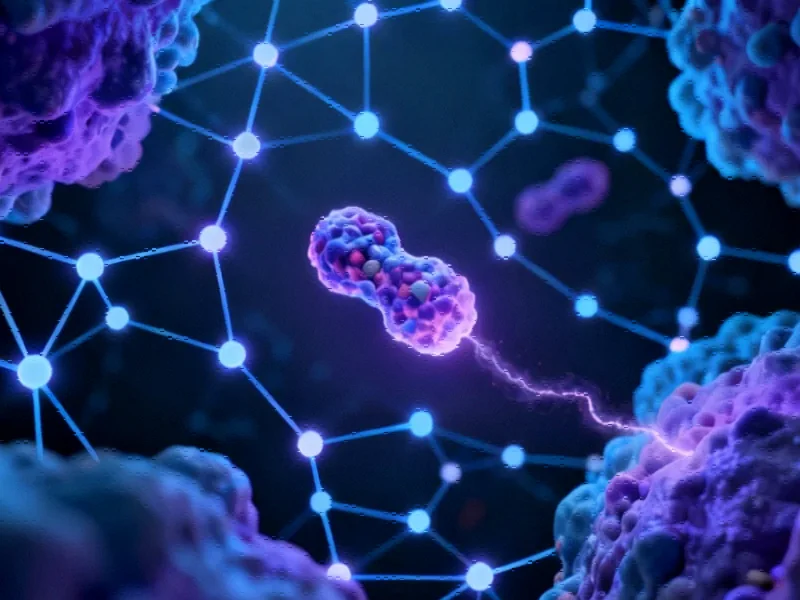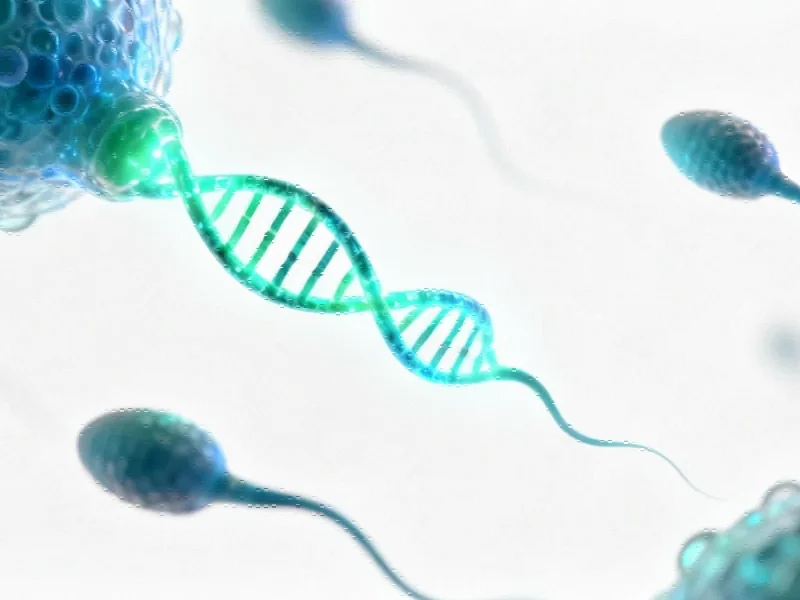Breakthrough Discovery in Cellular Protein Degradation
Scientists have identified a previously unknown mechanism by which cells maintain protein quality control, with optineurin (OPTN) emerging as a key adaptor protein in Golgi membrane-associated degradation (GOMED). This discovery represents a significant advancement in understanding how cells selectively eliminate unwanted proteins, particularly those that have passed through the Golgi apparatus. The findings, published in recent research, reveal that OPTN functions as a crucial bridge between ubiquitinated substrates and the degradation machinery, similar to its known role in selective autophagy but operating through a distinct pathway.
The research demonstrates that GOMED represents a third mechanism of Ub-mediated proteolysis, alongside the well-established K48-Ub chain-mediated proteasome degradation and linear Ub/K63-Ub chain-mediated autophagy pathways. This newly identified pathway specifically utilizes K33-Ub chains as recognition signals and OPTN as the adaptor molecule, creating a sophisticated quality control system for proteins that have transited through the Golgi complex.
Understanding GOMED: A Specialized Degradation Pathway
GOMED operates by generating autophagosome-like and autolysosome-like structures that specifically target proteins that have passed through the Golgi apparatus. Unlike conventional autophagy, which relies on multiple adaptor proteins including p62/SQSTM1, NDP52, NBR1, and TAX1BP1, GOMED appears to predominantly utilize OPTN as its primary adaptor. This specialization makes the pathway particularly important for maintaining cellular homeostasis under specific stress conditions.
Researchers employed multiple experimental approaches to validate OPTN’s role, using both Atg5-deficient mouse embryonic fibroblasts and specially engineered HeLa cells lacking all five major autophagy adaptor proteins (PentaKO cells). Through these models, they demonstrated that OPTN is not merely a substrate of GOMED but functions as an essential adaptor protein that facilitates the recognition and degradation of specific ubiquitinated targets.
Experimental Evidence Confirming OPTN’s Adaptor Function
The research team conducted comprehensive experiments to establish OPTN’s critical role in GOMED. When they induced GOMED using etoposide—a compound that generates genotoxic stress—they observed a characteristic pattern: OPTN levels initially increased transiently before decreasing, and this reduction was prevented by chloroquine, which inhibits lysosomal degradation. This pattern strongly suggested that OPTN itself was being degraded through the GOMED pathway.
Further confirmation came from silencing experiments, where reducing OPTN expression substantially decreased GOMED activity as measured by DAPGreen staining—a probe that detects both autophagy and GOMED structures. Rescue experiments using siRNA-resistant OPTN constructs successfully restored GOMED activity, providing compelling evidence for OPTN’s essential function as an adaptor protein in this pathway.
Cellular Localization and Mechanism
The study also revealed important details about how OPTN operates within cells during GOMED. Researchers observed increased colocalization of OPTN with Golgin97—a protein marker for trans-Golgi membranes—following etoposide treatment. This finding aligns with GOMED’s origin from trans-Golgi membranes and suggests that OPTN recruits ubiquitinated substrates at this specific cellular location.
As GOMED progresses, the structures eventually fuse with lysosomes to form autolysosome-like compartments. The research team confirmed this progression by demonstrating OPTN’s colocalization with Lamp1, a lysosomal marker, after etoposide treatment. This complete pathway—from substrate recognition at the Golgi to final degradation in lysosome-like structures—represents a sophisticated quality control mechanism that complements existing protein degradation systems.
Broader Implications and Applications
This discovery has significant implications for understanding cellular quality control mechanisms and their potential applications in therapeutic development. The identification of K33-Ub chains as specific “eat-me” signals for GOMED opens new avenues for research into protein degradation pathways. These findings contribute to our understanding of fundamental cellular processes that could inform new protein recycling pathways with potential therapeutic applications.
The research also demonstrated OPTN’s role in physiological contexts, particularly in mitochondrial removal during erythrocyte differentiation. This suggests that GOMED represents not just a stress response mechanism but also participates in normal cellular development and differentiation processes. As researchers continue to explore these mechanisms, they may uncover new approaches to addressing commercial applications in biotechnology and pharmaceutical development.
Multiple Inducers Confirm OPTN’s Central Role
To ensure their findings weren’t limited to a single stressor, researchers tested GOMED induction using 1,3-cyclohexanebis(methylamine) (CBM), which inhibits protein trafficking from the Golgi to the plasma membrane. Similar to etoposide treatment, CBM induced characteristic OPTN dynamics—transient increase followed by decrease—that were blocked by chloroquine. OPTN silencing again substantially reduced GOMED activity, confirming its adaptor function across different induction mechanisms.
In HeLa cells, CBM treatment generated numerous large LAMP2-positive structures indicative of autolysosome-like GOMED structures, while PentaKO cells showed significantly fewer such structures. Importantly, introducing OPTN—but not other adaptor proteins—restored GOMED activity in these cells, providing additional evidence for OPTN’s specific role in this pathway.
Future Directions and Industry Relevance
This groundbreaking research opens numerous avenues for future investigation. The specific recognition of K33-linked ubiquitin chains by OPTN in GOMED suggests the existence of specialized ubiquitin ligases and deubiquitinating enzymes that regulate this pathway. Understanding these regulatory mechanisms could provide insights into related innovations in cellular quality control systems.
The discovery also highlights the importance of continued research into cellular degradation pathways, particularly as they relate to industry developments in quality control systems and protein management. As our understanding of these fundamental biological processes deepens, we can anticipate new applications across multiple fields, from therapeutic development to industrial biotechnology.
This research fundamentally expands our understanding of cellular quality control mechanisms, revealing OPTN as a key player in a previously underappreciated degradation pathway. The identification of GOMED as a distinct Ub-mediated proteolysis mechanism alongside the proteasome and autophagy provides a more complete picture of how cells maintain protein homeostasis, with potential implications for understanding disease mechanisms and developing novel therapeutic strategies.
This article aggregates information from publicly available sources. All trademarks and copyrights belong to their respective owners.
Note: Featured image is for illustrative purposes only and does not represent any specific product, service, or entity mentioned in this article.



